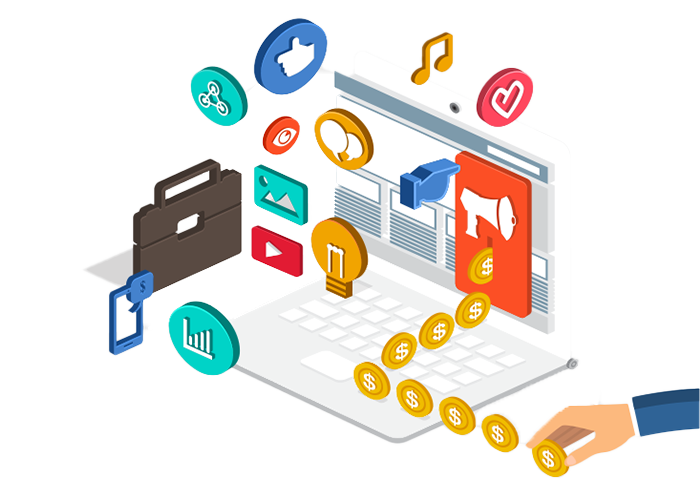Pay Per Click

The digital world is in hyperdrive. Businesses of all sizes—from small startups to established enterprises—are racing to establish an online presence and capitalize on digital marketing opportunities. While the possibilities seem endless, the competitive landscape has intensified dramatically. Pay Per Click.
Despite the abundance of advertising tools and channels, many businesses struggle to cut through the noise and reach their target audience. The challenge lies in effectively navigating a crowded digital marketplace and standing out from the competition. Pay Per Click.
Major challenges faced by online companies:
- Rising competition.
- Growth of ad blockers.
- Stringent industry regulations.
- Evolving customer demands.
- High costs of digital advertising.
- Inconsistent market standards.
- Hard-to-reach consumers.
What is PPC?
Pay-per-click (PPC) marketing is a paid search model designed to build brand awareness, promote brand offerings, and gain immediate traction from specific audience segments. With PPC, advertisers pay only when a user clicks on their ads, which is why it’s called pay-per-click.
While Google PPC is often the first thing that comes to mind when discussing pay-per-click, this model extends beyond Google search engine results pages (SERPs) and the Google Display Network. Social media platforms like YouTube, Facebook, Pinterest, and LinkedIn also use the pay-per-click model.
PPC enables marketers to strategically place ads on various online marketing platforms, making their products and services highly visible to their target audience. Therefore, the advertisements you see across the web are often pay-per-click ads.


What Are the Different Types of PPC Ads?
Pay-per-click (PPC) marketing is a paid search model designed to build brand awareness, promote brand offerings, and gain immediate traction from specific audience segments. With PPC, advertisers pay only when a user clicks on their ads, which is why it’s called pay-per-click. While Google PPC is often the first thing that comes to mind when discussing pay-per-click, this model extends beyond Google search engine results pages (SERPs) and the Google Display Network. Social media platforms like YouTube, Facebook, Pinterest, and LinkedIn also use the pay-per-click model.Display Ads
Search Ads
Social Ads
Remarketing Ads
Google Shopping Ads
In-stream Ads
Gmail Sponsored Promotions (GSP).
Local Services Ads
How Does PPC Marketing Work?
PPC advertising is a keyword-based marketing strategy. PPC campaign management services like AdWords assign values to different search terms and phrases based on their search volume, difficulty, and competition level. The more advertisers competing for the same keyword, the higher its price.
Marketing platforms, such as Google’s homepage, have limited slots for pay-per-click (PPC) ads. This means you need to compete for your PPC spot. Advertisers can’t simply pay more to increase the prominence of their Google PPC ads. Google PPC and other PPC ads are subject to an ad auction. This automated process used by search engines determines the relevance and validity of advertisements that appear on their SERPs. To improve your ad position and lower your cost per click (CPC), you must ensure your Google PPC ads have a good Quality Score.
To achieve a good Quality Score, your PPC ads must be relevant to your target demographics, include valuable keywords, achieve high click-through rates (CTRs), and direct prospects to an SEO-optimized landing page.
If you don’t have the time to perform a PPC audit and launch your pay-per-click campaign, entrust your PPC services to our management company and let us handle the technical work for you.
